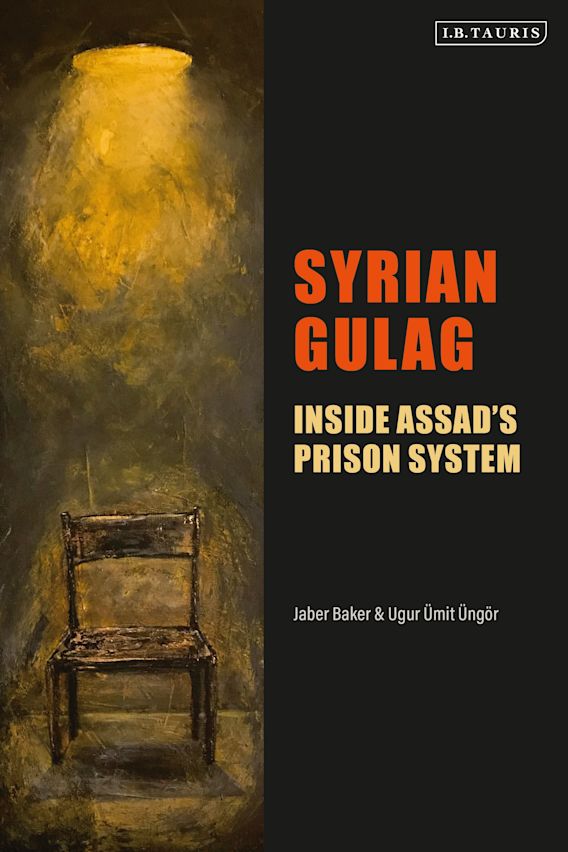
I’ve written a long essay for a future issue (the Halal issue) of the Critical Muslim which reviews three necessary books on the politics of the Middle East. Two are Alex Rowell’s “We Are Your Soldiers” and Azmi Bishara’s “Syria 2011 – 2013”. Here I’m showing you a few paragraphs on the third book – Syrian Gulag: Inside Assad’s Prison System – because it’s such an essential addition to the Syrian bookshelf that I feel the need to publicise it. Nobody should pontificate about Syria before making themselves familiar with this material.

To better understand the history of the strong man, or the taghout, in Syria, let’s return to the country’s torture chambers, which became more numerous and more politically salient in the days of the UAR. Some years later, Hafez al-Assad further expanded the detention and torture network, to the point that the entire Syrian society was governed, and smothered, by the fear of detention and torture. The misrule of the supreme strong man was underpinned by hundreds of little strong men abusing people in prisons.
The US incarcerates 629 people per 100,000 of the population. This is generally considered to be the worst rate in the world. Russia incarcerates 445 per 100,000. In Syria, however, 1,200 per 100,000 are incarcerated. That’s a conservative estimate. And many of those who are taken “behind the sun”, as Syrians say, never return.
I’ve taken those figures from Syrian Gulag: Inside Assad’s Prison System by Jaber Baker and Ugur Umit Ungor. This is an immense work, based on over 100 interviews with survivors, some interviews with defected perpetrators, leaks – including the ‘Caesar’ photos of at least 6,786 people murdered in detention – as well as reports by international organizations, a vast archive of torture accounts held by a Dutch immigration lawyer, and published and unpublished prison memoirs. Prison literature (adab as-sijoon) is Syria’s most developed genre, very unfortunately.
Syrian Gulag is encyclopedic, organizing information on the different types of prisons, the various branches and their histories, and the officers who built the system. In so doing, sadly, it gives a history of the last sixty years in Syria. What’s surprising here is the petty sadism of the top-level, household-name officers, their willingness to get their hands dirty. The people in charge are thugs, quite literally. And what is wearily familiar here is the taghout’s tactic of turning meaning on its head. The “Palestine Branch” sounds like it does exciting espionage on Israel, but is in fact a torture camp for the abuse of Palestinians and Syrians.
The torture methods described are numerous and heart-shattering. They include “the German Chair”, “the Dynamo”, tying the penis, sleep deprivation, electrocution, “the Magic Carpet”, “the Ladder”, burning with charcoal, burning with hot water, fingernail extraction, drowning, “the Parachute”, “the Pyramid Pose”, cutting with knives, and rape. Remember, these horrors are not freak occurrences. Almost every Syrian family has encountered them.
The conditions of detention are often as traumatic and as likely to cause death as the torture. Witnesses report the psychological effects: ‘It’s like I’m in a parallel life filled with nightmares,’ says one. Cases of fasalit, or “switching off” are described. One woman forgot where she was and imagined herself in a street full of taxis. She saw them driving past in all directions.
The book is illustrated with photographs of key officers, and explanatory sketches of some of the torture methods listed above. Most importantly, and most movingly, it provides abundant personal testimony, giving voice to men and women who survived the most hellish of environments, and commemorating the hundreds of thousands who did not. A bare minimum of 120,000 people are missing in the gulag today.
Syrian Gulag is the strangest of reading experiences, both compulsive and repulsive. I turn the pages compulsively, until I can’t bear another word. But it does need an edit, to standardize the spellings of names and people, for instance, and occasionally to polish the English. It looks as if IB Tauris didn’t recognize the significance of this book, which is huge. It should henceforth be on university reading lists, and in journalists’ backpacks, and inside the head of anybody who claims to speak knowledgably about Syria. One thing that a reading of Syrian Gulag will do is to reframe questions. A few minutes with the book turns the enquiry “why did the Syrian Revolution happen?” to “why didn’t it happen earlier?” – and then immediately answers it: because Syrians knew that any dissent would lead to a fate worse than death.
